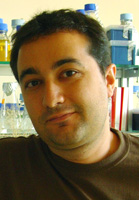Abstract
Malondialdehyde (MDA) has been considered in the past exclusively as the non-enzymatic oxidation by-product of many fatty acids with three (trienoic fatty acids) or more double bonds. However, nowadays MDA is known to be responsible of the up-regulation of many genes involved, principally, in abiotic stress responses in plants. The origin of a second MDA pool independent of trienoic fatty acids found in root tips of Arabidopsis thaliana is currently unidentified, which opens the question about the origin and biological function of this pool of MDA. Additionally, MDA is thought to be a latent molecule for the activation of cell survival signalling, because whereas cellular MDA has relatively low reactivity at neutral (cytosolic) pH, when it is exposed to acidic pH (as occurs during several stressing conditions) assumes the reactive form.
Moreover, the subcellular localization of MDA in plants is completely unknown at this moment, and this could be important to establish a role for its compartmentalization in the activation and function of this molecule. The main objective of this project is to study the origin, localization and biological function of MDA in plants. By obtaining A. thaliana mutants with altered levels of a non-trienoic fatty acid-derived MDA pool in the root tip, we will be able to find the origin and, presumably, the biological significance of this MDA pool. In addition, we will use confocal microscopy to study, for the first time in plants, the subcellular localization of MDA. This multi-disciplinary project will allow us to progress significantly in understanding the biology of the MDA and to study the abiotic stress signalling mechanisms in plants from an original and innovative point of view.



